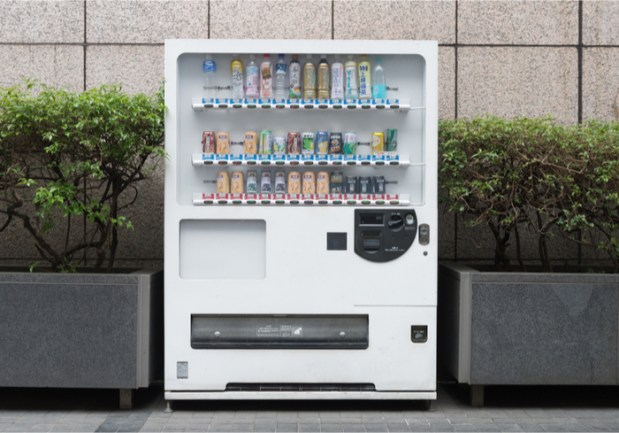Grocers Consider Checkout Line-Free Future With Unattended Retail

To help shoppers check out without waiting in line, grocery retailers are rolling out entire stores centered around cashierless shopping experiences, enabling consumers to purchase fresh food and grocery items with a mobile payments app. From North America to China, the concept is gaining ground around the world as retailers mull bringing the technology to multiple – even thousands of – locations.
In the U.S., Amazon has arguably pioneered the concept with its Amazon Go stores: The first location opened in Seattle this past January. And on the other side of the world, BingoBox operates over 200 of its self-service specialty stores in 29 Chinese provinces – and has nabbed $80 million in funding to boot.
According to the PYMNTS Unattended Retail Tracker, the self-service market is growing rapidly, as fresh food sellers work to carve themselves a niche in a market that will soon be worth billions.
The projected value of the global self-service market by 2023 is $13 billion. With ShelfX’s technology, for instance, customers can unlock fridges by providing a credit card or another payment option. Once the system determines that the payment is valid, ShelfX unlocks the door and consumers can browse the selection. They can even take an item out of the cooler to read its packaging, place it back in the cooler if they decide not to purchase it. Using weight sensors, ShelfX only charges consumers for the items they do not replace. This type of technology can find its way into all sorts of locations, including workplaces, hospitals, universities, train stations and even airports. The machines can be particularly helpful in places like hospitals, where on-site meal options might not be available to staff around the clock.
Fifty-three percent of male British consumers prefer self-service checkout, compared to 47 percent of female consumers. Months after Amazon rolled out its cashierless convenience store dubbed Amazon Go, Tesco is testing a checkout-free payment method in the U.K., as reported in June. The British grocer is experimenting with the concept on its corporate campus at a Tesco Express C-store, the Daily Mail reported. Tesco Convenience Transformation Director Steven Blair said, “Using your mobile device, you select some products, put them into your basket on your device and then just walk out of the store. The feedback is very good on it, but it’s super early.” While the smartphones of certain staff can use the service through an app called Scan Pay Go, the experiment might be conducted more widely if it proves to be successful.
There are 3,000 planned Amazon Go stores by 2021. According to a report in September, Amazon might open 3,000 Amazon Go locations by 2021. The company should have about 10 new cashierless stores by the end of this year, according to sources, while the eCommerce giant is aiming to have 50 stores in major metro areas. But an Amazon spokesperson told CNBC in an emailed statement, “We don’t comment on rumors or speculation.” The news comes as Amazon also launched an Amazon Go location in Chicago. This marks the fourth Go store, and the first to open outside of Amazon’s hometown of Seattle. In September, the company announced plans to open an Amazon Go location in New York, and there are also reportedly plans to expand to San Francisco. The first Amazon Go opened earlier this year in Seattle, and two more locations have launched since then in the city. At the first Seattle location, Amazon Go customers can choose from pre-made salads, sandwiches, snacks and meals, as wells as beer, wine and other beverages. Shelves are also stocked with produce, meat and Amazon meal kits.
The number of smart vending machines projected to be in use by 2023 in the Asia-Pacific is 4.5 million. Inexpensive costs for production, as well as limited barriers to data privacy, is helping Japan, China and South Korea to adopt smart vending machines. ABI Research predicts that one million automated retail units will be in the Asia-Pacific region by 2023. In addition, the firm forecasts that the region will have more than 4.5 million smart vending machines. “The initial growth rate of automated retail units in the Asia-Pacific market, driven primarily by China, has already been astonishing, and will continue to grow exponentially over the next five years,” noted ABI Research Senior Analyst Nick Finill. The report also noted that China will be a primary market for intelligent machines by 2023, but North America currently has about 75 percent of all smart vending machines.
And 16 percent of global consumers claim self-service checkout availability is a deciding factor in where they shop for groceries. Target, for instance, is now allowing consumers to select produce by using emojis, the retailer said in an announcement in July. Target launched the feature because it has found that buying produce is a pain point for consumers. When consumers search the full selection of a retailer’s items at self-checkout, they might inadvertently choose the incorrect item from a drop-down menu. As a result, Target rolled out a way for consumers to select fresh vegetables and fruits with emojis, such as a crying face emoji for onions. Target’s experience also includes a filter for customers to select the retailer’s most popular items. Also new is a back button to correct mistakes in the self-checkout process.
Self-service retail is big in China, and BingoBox is far from the only player in the unattended retail game. Chinese data aggregator ITjuzi found that China’s cashierless stores sector attracted 1 billion yuan (about $156 million) in funding in the third quarter of 2017 alone, showing that the technology is gaining ground around the world.
